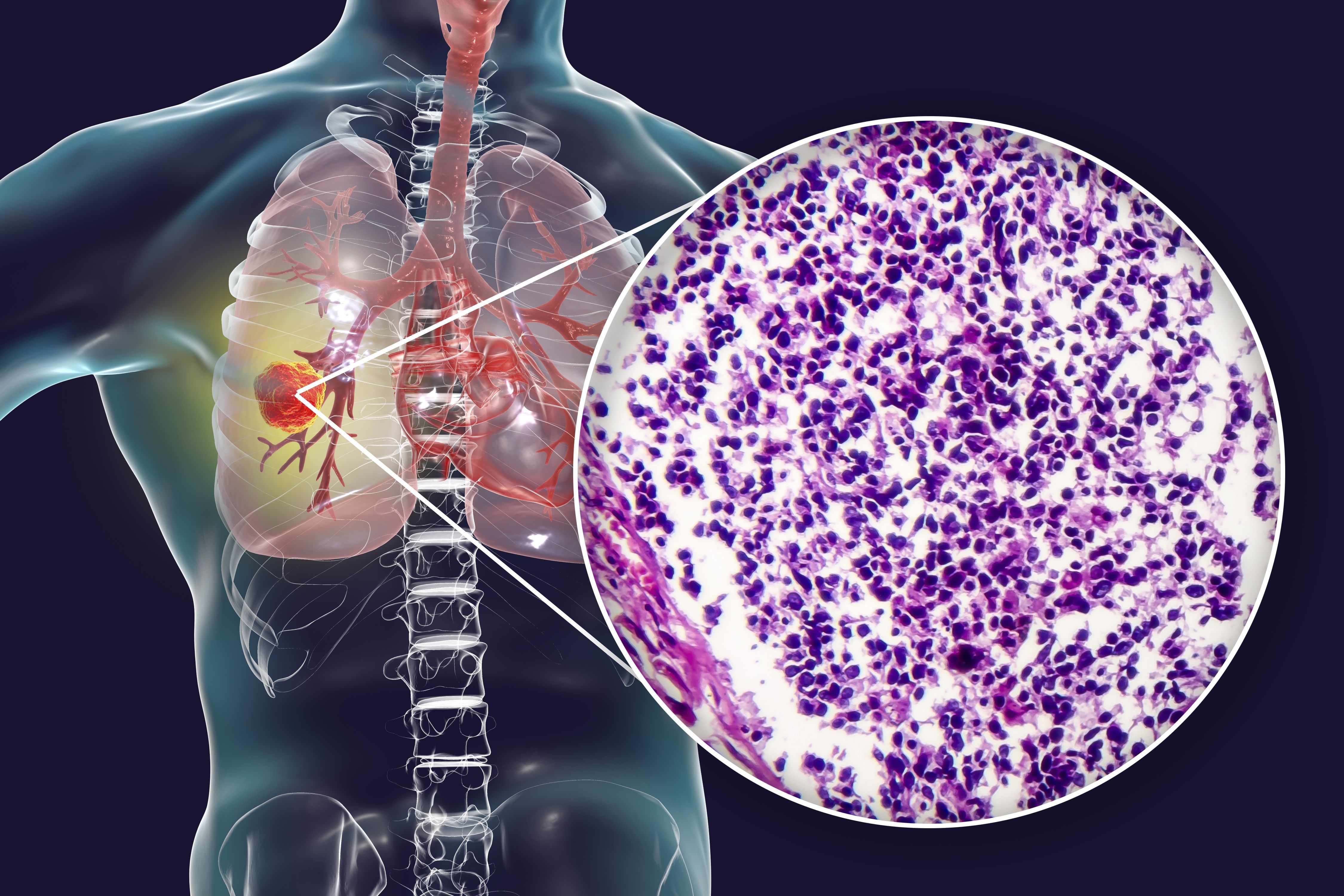Mirtazapine May Increase Energy Intake, Improve QOL in NSCLC Plus Anorexia
Findings from a randomized trial highlight that treatment with mirtazapine may lead to an improvement in health-related quality of life among those with advanced non–small cell lung cancer and anorexia.
“In this randomized clinical trial of patients with advanced NSCLC, there was no difference in appetite scores in all patients who received mirtazapine or placebo, but the mirtazapine group had a significant increase in energy intake through the 4 and 8 weeks of follow-up, mainly in fat intake, which is a better and crucial source of energy,” according to the study authors.

Mirtazapine resulted in a significant increase in energy intake—primarily fat intake—among patients with non–small cell lung cancer (NSCLC) and anorexia, according to findings from a randomized clinical trial (NCT04748523) published in JAMA Oncology.
There was a significant increase in appetite score at 4 weeks and 8 weeks in patients who received mirtazapine and those who received placebo (P <.001); investigators highlighted no significant difference in outcomes between these groups (P = .34). At 4 weeks, patients who received mirtazapine experienced an increase in energy consumption of 379.3 kcal (95% CI, 182.6-576.1; P <.001), achieving a required percentage of 26.1% (95% CI, 12.3%-39.9%: P <.001), protein intake of 22.4 g (95% CI, 11.5-33.4; P <.001), carbohydrate intake of 43.4 g (95% CI, 13.1-73.8; P = .006), and fat intake of 13.2 g (95% CI, 6.0-20.4; P = .001).
The energy intake was 357.7 kcal (95% CI, 138.9-576.6; P = .002) among patients who received mirtazapine compared with 226.5 kcal (95% CI, 9.6-443.5; P = .04) among those who were treated with placebo, reflecting no significant difference between groups (P = .38). Patients in the mirtazapine group consumed a higher proportion of fats at 14.5 g compared with 0.7 g in the placebo group (P = .02).
“In this randomized clinical trial of patients with advanced NSCLC, there was no difference in appetite scores in all patients who received mirtazapine or placebo, but the mirtazapine group had a significant increase in energy intake through the 4 and 8 weeks of follow-up, mainly in fat intake, which is a better and crucial source of energy,” the study authors wrote. “Patients with advanced NSCLC and anorexia may improve their nutritional status with the addition of mirtazapine, which helps to achieve energy requirements reflected in an increased intake of high-quality macronutrients and health-related quality of life [HRQOL] parameters.”
In this trial, 86 patients were randomly assigned 1:1 to receive mirtazapine at 15 mg (n = 43) or placebo (n = 43) for 2 weeks before a dose escalation to 30 mg of the experimental agent up to week 8 or placebo.
Investigators assessed appetite based on the Anorexia Cachexia Scale (ACS) and energy intake and measured dietary parameters at baseline, 4 weeks, and 8 weeks. Additionally, a 24-hour dietary recall was carried out as well as energy quantification per the Mexican system of nutritional equivalent. Patients with advanced NSCLC and an ACS score of no higher than 32 were able to enroll on the study.
The 4-week follow-up analysis included 38 patients in the mirtazapine arm and 33 in the placebo arm, with a mean age of 63.5 years. Most patients in the experimental and control arms, respectively, were female (63.2% vs 51.5%), had an ECOG performance status of 1 (89.5% vs 90.9%), adenocarcinoma histology (92.1% vs 84.8%), and stage IV disease (92.1% vs 87.9%). Across the overall population, most patients received treatment with tyrosine kinase inhibitors (54.9%), chemotherapy (40.8%), and immunotherapy (4.2%).
The median weight change was –0.1 kg in the mirtazapine arm and –0.1 kg in the placebo arm; there was no significant difference between groups with respect to this outcome. Additionally, there was no significant difference in the proportion of patients with sarcopenia at baseline in the experimental arm (59.5%) compared with the placebo group (75.0%; P = .19); the rate of sarcopenia at 8 weeks was 57.1% and 82.8% in each respective group (P = .03).
Investigators reported an improvement in HRQOL in the mirtazapine and placebo arms from baseline. Additionally, global health status increased significantly among patients who received mirtazapine by 16.7 points (P <.001).
The proportion of hematologic and nonhematologic adverse effects (AEs) in the experimental arm was comparable with that observed in the placebo arm. Based on the Visual Analogue of AEs, the score for perceived severe fatigue was 2.0 in the mirtazapine group compared with 4.5 in the placebo arm (P = .03). Investigators noted that patients in the experimental arm more frequently had nightmares at 2 weeks (P = .009).
Reference
Arrieta O, Cárdenas-Fernández D, Rodriguez-Mayoral O, et al. Mirtazapine as appetite stimulant in patients with non–small cell lung cancer and anorexia: a randomized clinical trial. JAMA Oncol. Published online January 11, 2024. doi:10.1001/jamaoncol.2023.5232